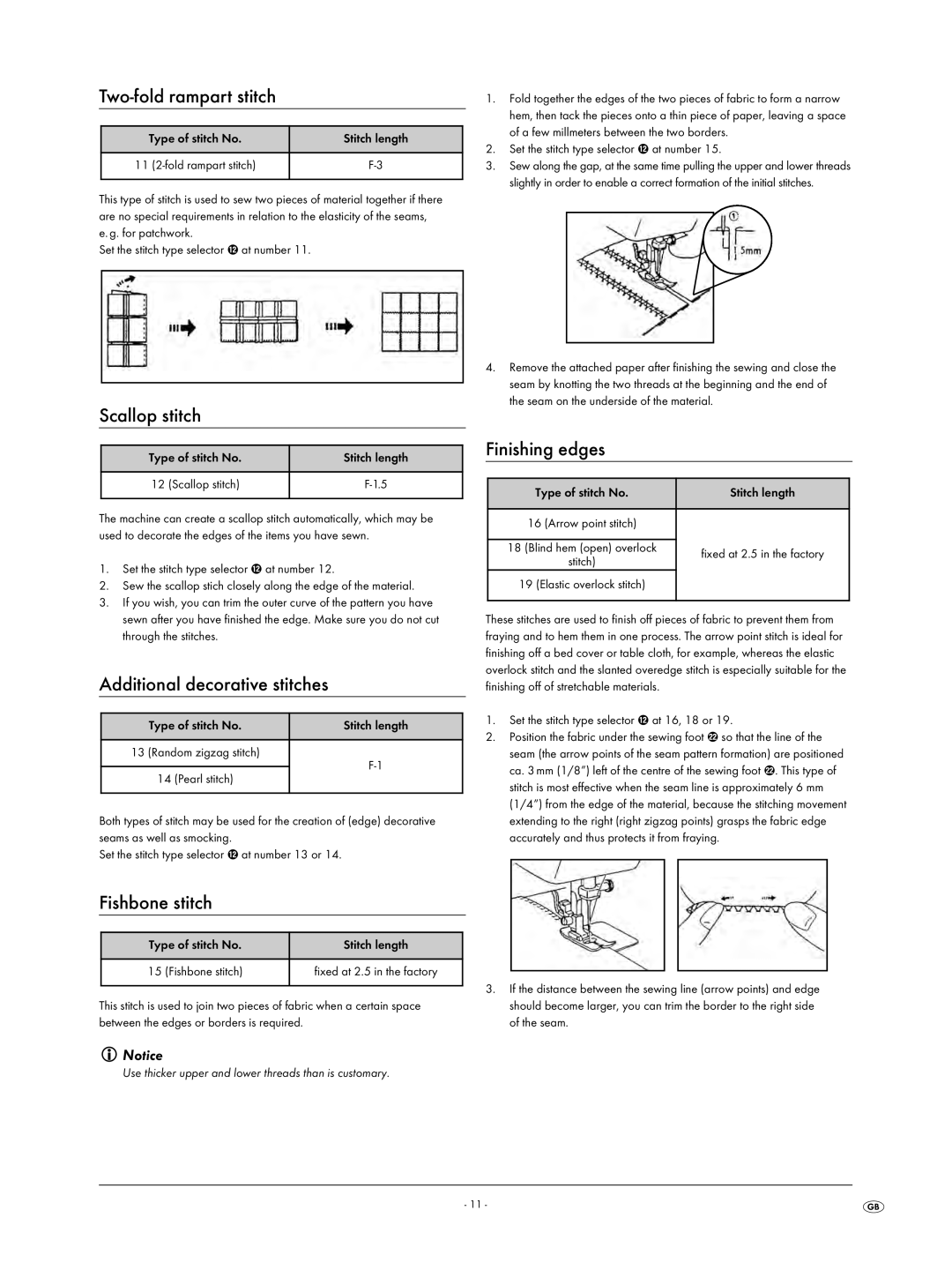
Two-fold rampart stitch
Type of stitch No. | Stitch length |
|
|
11 | |
|
|
This type of stitch is used to sew two pieces of material together if there are no special requirements in relation to the elasticity of the seams, e. g. for patchwork.
Set the stitch type selector w at number 11.
Scallop stitch
Type of stitch No. | Stitch length |
|
|
12 (Scallop stitch) | |
|
|
The machine can create a scallop stitch automatically, which may be used to decorate the edges of the items you have sewn.
1.Set the stitch type selector w at number 12.
2.Sew the scallop stich closely along the edge of the material.
3.If you wish, you can trim the outer curve of the pattern you have sewn after you have finished the edge. Make sure you do not cut through the stitches.
Additional decorative stitches
Type of stitch No. | Stitch length |
|
|
13 (Random zigzag stitch)
14 (Pearl stitch)
Both types of stitch may be used for the creation of (edge) decorative seams as well as smocking.
Set the stitch type selector w at number 13 or 14.
1.Fold together the edges of the two pieces of fabric to form a narrow hem, then tack the pieces onto a thin piece of paper, leaving a space of a few millmeters between the two borders.
2.Set the stitch type selector w at number 15.
3.Sew along the gap, at the same time pulling the upper and lower threads slightly in order to enable a correct formation of the initial stitches.
4.Remove the attached paper after finishing the sewing and close the seam by knotting the two threads at the beginning and the end of the seam on the underside of the material.
Finishing edges
Type of stitch No. | Stitch length | |
|
| |
16 (Arrow point stitch) |
| |
|
| |
18 (Blind hem (open) overlock | fixed at 2.5 in the factory | |
stitch) | ||
| ||
19 (Elastic overlock stitch) |
| |
|
|
These stitches are used to finish off pieces of fabric to prevent them from fraying and to hem them in one process. The arrow point stitch is ideal for finishing off a bed cover or table cloth, for example, whereas the elastic overlock stitch and the slanted overedge stitch is especially suitable for the finishing off of stretchable materials.
1.Set the stitch type selector w at 16, 18 or 19.
2.Position the fabric under the sewing foot s so that the line of the seam (the arrow points of the seam pattern formation) are positioned ca. 3 mm (1/8”) left of the centre of the sewing foot s. This type of stitch is most effective when the seam line is approximately 6 mm (1/4”) from the edge of the material, because the stitching movement extending to the right (right zigzag points) grasps the fabric edge accurately and thus protects it from fraying.
Fishbone stitch
Type of stitch No. | Stitch length |
|
|
15 (Fishbone stitch) | fixed at 2.5 in the factory |
|
|
This stitch is used to join two pieces of fabric when a certain space between the edges or borders is required.
Notice
Use thicker upper and lower threads than is customary.
3.If the distance between the sewing line (arrow points) and edge should become larger, you can trim the border to the right side of the seam.
- 11 -
